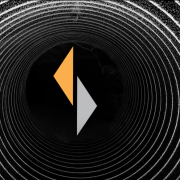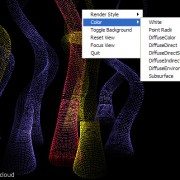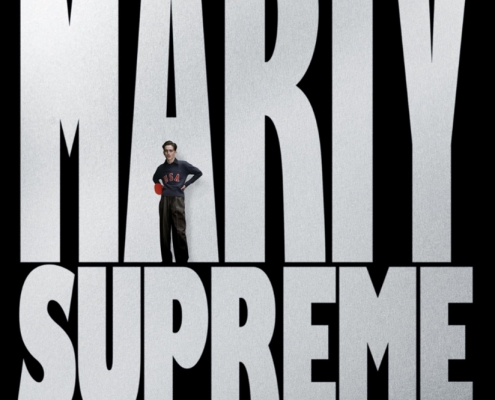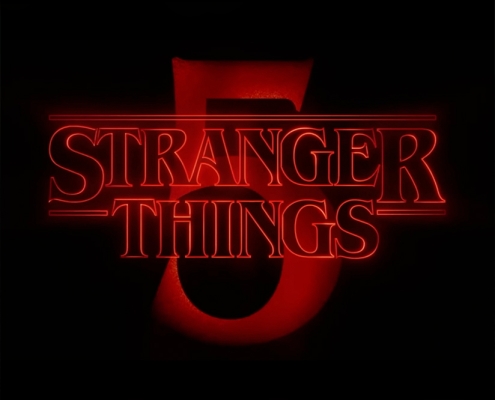Tag Archive for: LiDAR
Daredevil: Born Again: the art and craft of critical VFX collaboration
/0 Comments/in 3D Laser Scanning, In the News, LiDAR, Photogrammetry, Visual Effects (VFX)/by Ty TaylorMatthew McConaughey, Woody Harrelson Revive ‘True Detective’ Roles to Call for Filming in Texas: ‘Hollywood Is a Flat Circle’
/0 Comments/in Blog, Featured, LiDAR, Mobile Scanning, Modeling, Photogrammetry, Uncategorized, Visual Effects (VFX)/by Ty TaylorHere are all the nominees for the 23rd Annual VES Awards
/0 Comments/in Blog, Featured, LiDAR, Mobile Scanning, Modeling, Photogrammetry, Uncategorized, Visual Effects (VFX)/by Ty TaylorSCANable Strengthens Existing West Coast Presence
/0 Comments/in Blog, Featured, LiDAR, Mobile Scanning, Modeling, Photogrammetry, Uncategorized, Visual Effects (VFX)/by Ty TaylorGoogle Maps Street View 2.0 [LiDAR]
/0 Comments/in 3D Laser Scanning, In the News, LiDAR, New Technology/by Travis Reinke
Last week Google announced the release of a plugin which allows users access to Google Earth imagery via Maps. As a result it’s now possible to view 3d images in Google Maps. The problem here is fairly obvious, Google Earth’s aerial imagery is taken from above and as a result not from the same perspective as users interacting with the data. Not to worry though, the StreetView team has been working on these kinds of problems for some time. When it comes to Navigation, Maps or StreetView, earthbound LiDAR enhanced imagery processed via Sketchup seems like a perfect complement to Google’s existing view from above. Combining high resolution imagery taken from the user’s perspective with advanced 3D image technology, presents some new possibilities to say the least. Factor in new releases like business ads in Maps, now being available in 3D on your mobile device and it’s pretty clear how Sketchup will be monetized.”
It is expected that Google’s incorporation of LiDAR into their mapping efforts will lead to some significant changes to our industry. If you have not previously seen the “House of Cards” video, be sure to check out the interactive music video code to see how Google made the point cloud data readily available for manipulation in a standard web browser. Point clouds are finally becoming more natively accepted in most CAD platforms and with Google getting involved in the industry, who knows where we will be in the near future.
European LiDAR Mapping Forum
/0 Comments/in Events/by Travis Reinke
Location: The Hague Netherlands
Link out: Click here
Description: The European event for airborne, bathymetric and terrestrial LiDAR, with a particular focus on mobile mapping systems.
A major, two day technical conference focusing on the use of LiDAR to support transport, urban modelling, coastal zone mapping, asset management and GIS applications.
Alongside there is an associated international exhibition for system and component manufacturers, operators and service companies.
Building on 10 years of experience with the annual International LiDAR Mapping Forum (ILMF) in the USA, the organizers are bringing this unique event to Europe. With its focus on LiDAR technology and applications, ELMF10 recognizes the technology advances spearheaded in Europe, and the particular challenges and opportunities which face operators in applying LiDAR to new developments in the European market.
The ELMF10 theme is “LiDAR Across The Market Spectrum”, and the conference programme will feature technical presentations by the industry leaders and opinion formers.
Start Date: 2010-11-30
End Date: 2010-12-01
Tiltan TLiD Transform LiDAR Point Clouds to 3D Models in One Keystroke
/0 Comments/in LiDAR, Point Cloud/by Travis ReinkeFrom Tiltan’s website: TLiD is Tiltan’s innovative solution for fast, automated creation of 3D maps and GIS information from LiDAR point clouds.
TLiD Main Features:
– Automatic extraction of DTM (bare earth) and DSM
– Automatic features extraction (houses, trees, power lines)
– Automatic full scene 3D reconstruction
– LAS or free ASCII txt input
– LAS, SHP, DTM and other output file formats
– Multiple input/output coordinate systems
– Integrated with a 3D Viewer
TLiD Advantages:
– Fast parallel processing for cost reduction
– No limitation on input file size
– Standalone product
– Special Applications
– Trees counting – height and size
– Power line mapping and clearance
– Line of sight
– Other applications – available on request
Exploring Point-Based Rendering in Pixar’s RenderMan [Point Clouds]
/0 Comments/in Animation, Featured, Point Cloud/by Travis Reinke
Over the last few years, a brand new technology has emerged for creating CGI effects that has already made a big impact on feature film production. It is called point-based rendering, and this powerful technique makes creating global illumination effects for feature film far more practical and efficient than before. In fact, this year the Academy of Motion Picture Art and Sciences awarded the creators of this innovation, Per Christensen, Michael Bunnell and Christophe Hery, with a Scientific and Engineering Academy award.
In this great article written by Nils O Sandys at CGSociety, we will look into the development of this important new technology, how point-based rendering works, and what this all means to the future of feature film production as we know it. Read the full article here.
National Center for Airborne Laser Mapping Comes to Houston [LiDAR]
/0 Comments/in In the News, LiDAR/by Travis ReinkeApril 12, 2010 – Houston – Increasing its cadre of laser mapping researchers, the University of Houston will expand its pioneering work in such areas as homeland security, disaster recovery, oil and gas exploration, wind farm site planning and environmental studies.
The NSF National Center for Airborne Laser Mapping (NCALM) and the groundbreaking researcher leading it recently moved operations to the University of Houston. Based upon historical information, revenues generated by the center’s operation are anticipated to be $1 million per year and will be reinvested in the program.

Ramesh Shrestha, Hugh Roy and Lillie Cranz Cullen Distinguished Professor of Civil and Environmental Engineering, brought NCALM to UH from the University of Florida. He has been director of the center, focused on ground-based scanning laser technology and airborne laser swath mapping research, since it was established in 2003. Shrestha brought much of his Florida team with him to Houston, where they now operate NCALM jointly with the University of California-Berkley.
“With the center, we have brought laser mapping’s uses to the forefront and expect to continue to have this impact in our new Houston home,” Shrestha said. “We plan to establish curriculum catered to this specialty and eventually add a graduate degree in geosensing systems engineering. This is in addition to carrying out research far surpassing what is capable in laser mapping to date.”
Shrestha’s work with laser mapping goes back to the 1990s, when this once niche research area was just making its debut. Bill Carter, now a research professor at UH, worked with him early on and helped establish NCALM.
“Together, we saw its potential to far exceed what was possible with many traditional methods, such as airborne photogrammetric mapping that uses cameras to detail terrain,” Carter said. “Laser mapping has the ability to work day or night, as well as generally map areas even though they were covered by forests and other vegetation where photogrammetric methods couldn’t.”
It wasn’t long before other scientists would see its same benefits, especially as the two developed techniques to remove and minimize some of the errors seen in the early years. Their equipment became fine-tuned to collect even more data, now mapping as many as 167,000 points per second compared to the 3,000 they were able to achieve when they first started.
Their work has changed the way the state of Florida monitors erosion on its coastline, produced the highest resolution 3-D images in existence of the San Andreas Fault and taken them across the globe to map Mayan Ruins in Belize and volcanoes in Hawaii. While the impact of their work is already far reaching, their plan for the coming years indicates they are not close to completion. The value of this work is evident in evaluating the before and after of hurricanes and earthquakes in terms of improving building design and other mitigation efforts, as well as offering predictive tools for subsequent powerful events.

From roughly 2,000 feet, this remote technology measures properties of scattered light through the use of laser pulses. Thousands of small cone-shaped pulses travel through a hole in the bottom of the plane to the ground below, and a unique detector picks up rays reflected from the ground. Then, each point’s distance is determined by measuring the time delay between the transmission of a pulse and the detection of reflected signals. The plane’s location and movement in the air are tracked by an inertial measurement unit fixed inside the laser system with a GPS receiver mounted to the plane and others on the ground. Both are used, along with the laser data, to produce detailed 3-D topographical images of the terrain.
“In coming years, our group plans to develop a next-generation LiDAR system. The unit would be less expensive than commercially available systems and allow for some of the most accurate, highest-resolution observations possible in laser mapping,” Shretha said. “We want to develop a system like no one else has developed. It would really change what could be done with this technology. It would have new features, be faster, smaller and capture more during each flight than we can today.”
According to Shrestha, this system would use a much shorter pulse-length laser, increasing the number of points that could be mapped per second to 800,000. This would add to data accuracy and reduce the amount of time needed in the air to collect the information. Additionally, it would be able, for the first time, to penetrate shallow water depths.
NOTE TO JOURNALISTS: High-resolution photos of Ramesh Shretha and the Cessna 337 Skymaster airplane are available to media by contacting Lisa Merkl.
About the University of Houston
The University of Houston, Texas’ premier metropolitan research and teaching institution, is home to more than 40 research centers and institutes and sponsors more than 300 partnerships with corporate, civic and governmental entities. UH, the most diverse research university in the country, stands at the forefront of education, research and service with more than 37,000 students.
About the Cullen College of Engineering
The Cullen College of Engineering at UH has played a vitally important role in educating engineers in Texas. Taught by innovative faculty, eight of whom are in the National Academy of Engineering, the college offers degree programs in biomedical, chemical, civil, computer, electrical, environmental, industrial, mechanical and petroleum engineering, as well as specialty programs in materials, aerospace, and computer and systems engineering.
For more information about UH, visit the university’s Newsroom at http://www.uh.edu/news-events/.
To receive UH science news via e-mail, visit http://www.uh.edu/news-events/mailing-lists/sciencelistserv.php.
For additional news alerts about UH, follow us on Facebook and Twitter.
Tag Archive for: LiDAR
Quick Pages
Recent Productions
Latest News
 A $1.5B Investment in Texas’ Film is Now LawJune 23, 2025 - 4:49 pm
A $1.5B Investment in Texas’ Film is Now LawJune 23, 2025 - 4:49 pm Daredevil: Born Again: the art and craft of critical VFX collaborationMay 3, 2025 - 1:58 pm
Daredevil: Born Again: the art and craft of critical VFX collaborationMay 3, 2025 - 1:58 pm Here are all the nominees for the 23rd Annual VES AwardsJanuary 15, 2025 - 6:58 pm
Here are all the nominees for the 23rd Annual VES AwardsJanuary 15, 2025 - 6:58 pm


















